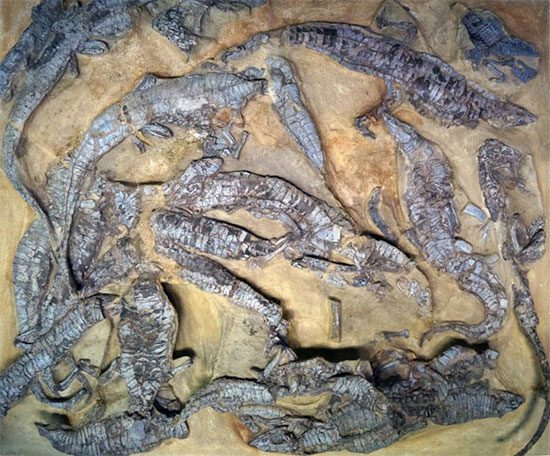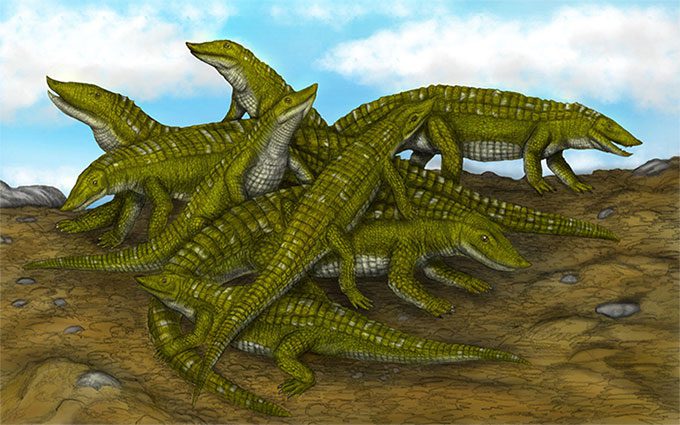New techniques have enabled paleontologists to decode many lingering mysteries about Aetosaur, a creature approximately 6 meters long from the Late Triassic period, resembling a bizarre hybrid of a dinosaur, eagle, and crocodile.
A recent study published in the scientific journal Journal of Vertebrate Paleontology investigated the development of the arm bones of the smallest and largest specimens from a “monster nest” of the species Aetosaurus ferratus from Kaltental, Germany.
The Aetosaurus ferratus collection in Kaltental represents the most significant discovery of Aetosaur, a group of mysterious reptiles that lived during the Late Triassic period, dating back over 200 million years.

Remarkably preserved fossil cluster of Aetosaurus ferratus in Kaltental – (Photo: J. Kowalski / P. Janecki)
The “monster nest” was excavated in 1877 and has attracted interest from various research groups worldwide, including efforts to identify the species and raise suspicions that these were juvenile specimens.
According to Sci-News, using more advanced techniques, a new research team led by paleontologist Elzbieta Teschner, working at two German-Polish universities – Bonn and Opole – confirmed that the animals in this famous collection were indeed juveniles, but they exhibited early herd behavior to fend off predators.
This may also explain why they died together in an unfortunate event before reaching one year of age. The phenomenon of “baby monsters” is still observed in many animals today, even after many years of evolution.
Despite being young, the body size of these specimens was quite impressive, ranging from 20 to 82 cm. The estimated adult size could reach up to 6 meters, equivalent to that of a rare giant saltwater crocodile.
Another Aetosaur species, Coahomasuchus, which is relatively smaller, has also been found in North America.

Bizarre appearance, resembling a hybrid of a dinosaur and crocodile with the added bird-like head of the “Aetosaur eagle lizard” – (Photo: E.M. Teschner).
The new analysis also vividly illustrated the strange profile of this group of creatures: They were four-legged reptiles, half resembling dinosaurs and half resembling crocodiles, feeding on herbivorous and omnivorous animals.
What makes this species particularly unique is that their skulls resemble those of birds more than dinosaurs, which also earned them the nickname “eagle lizard.”




















































